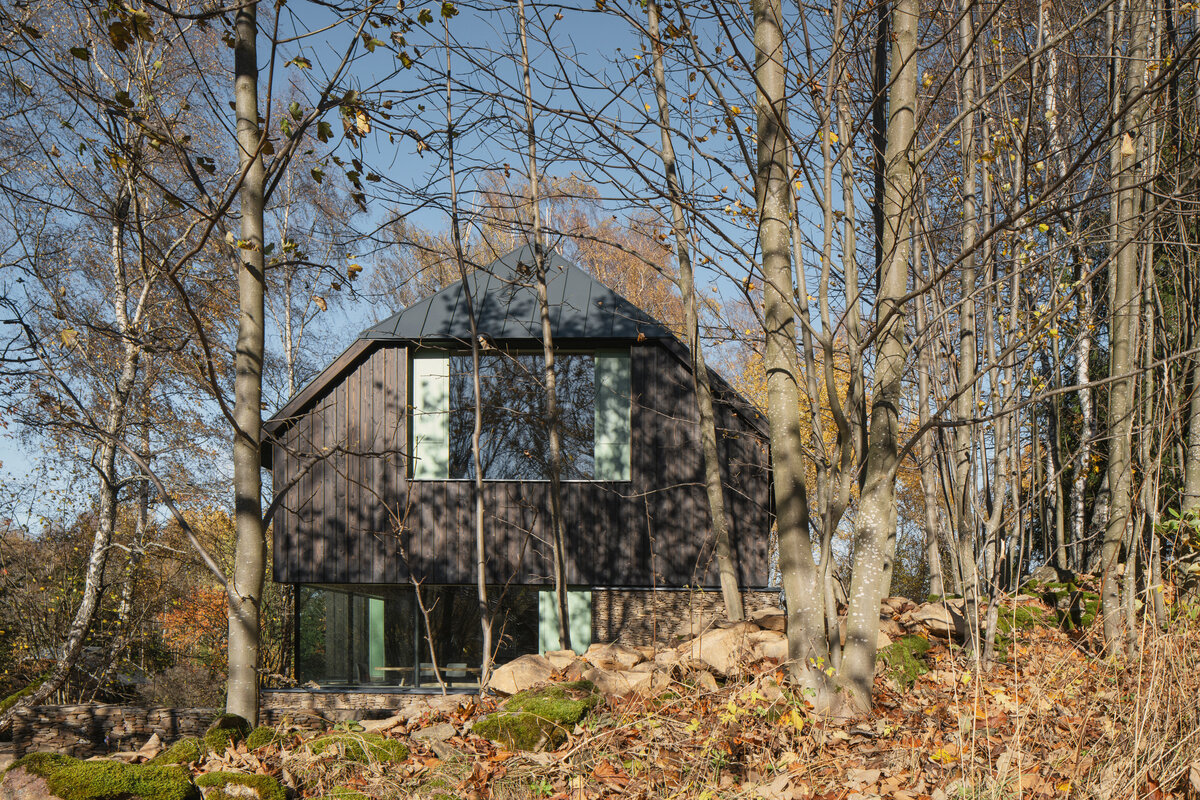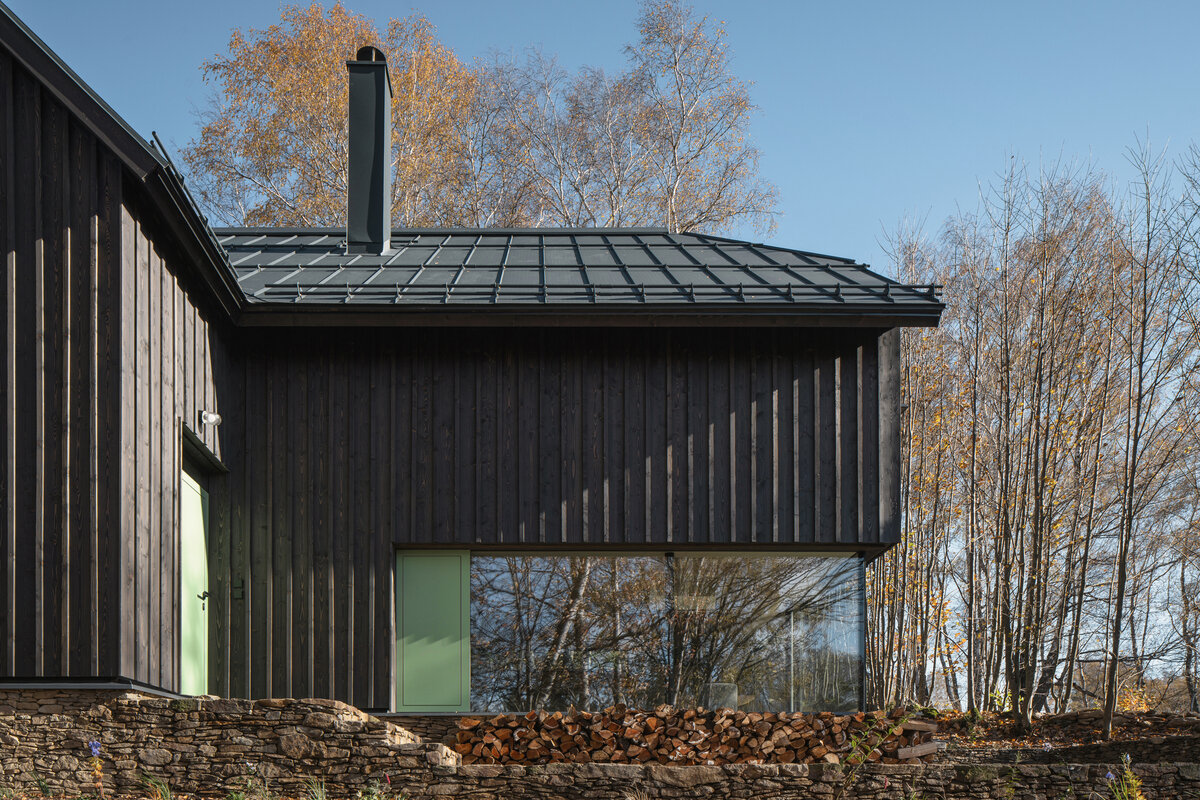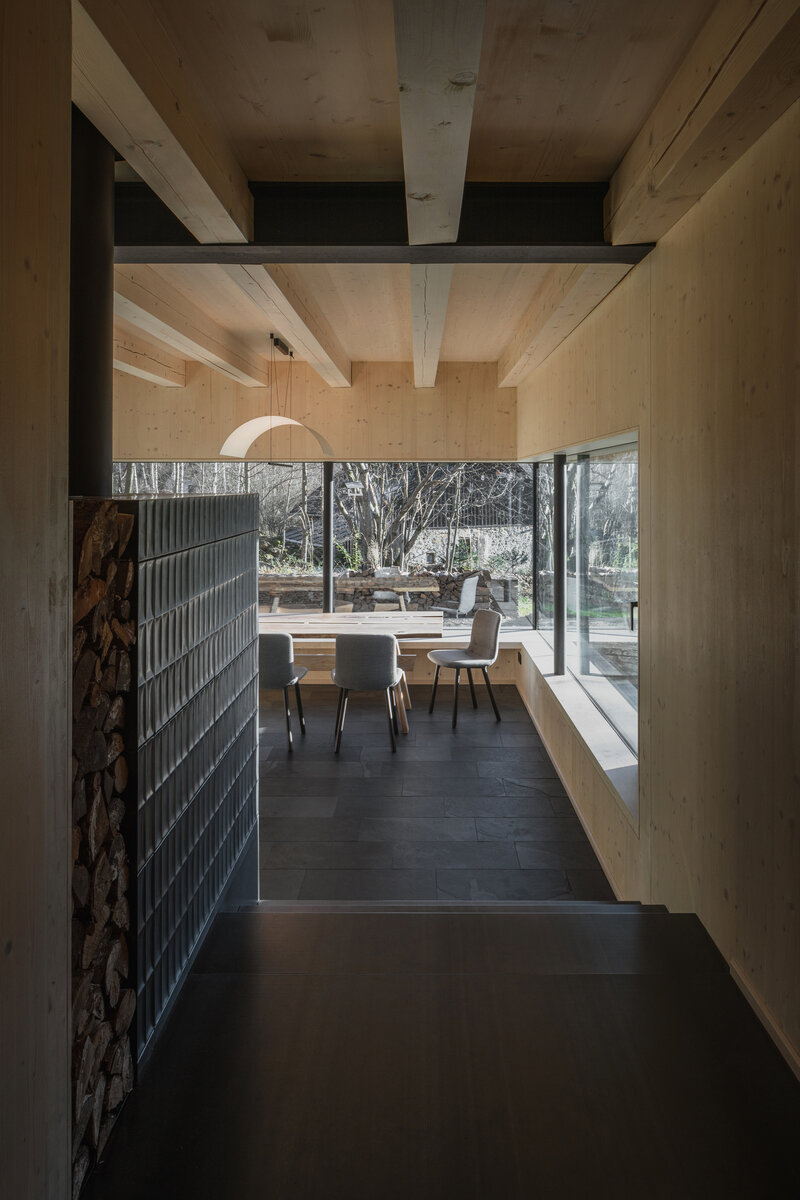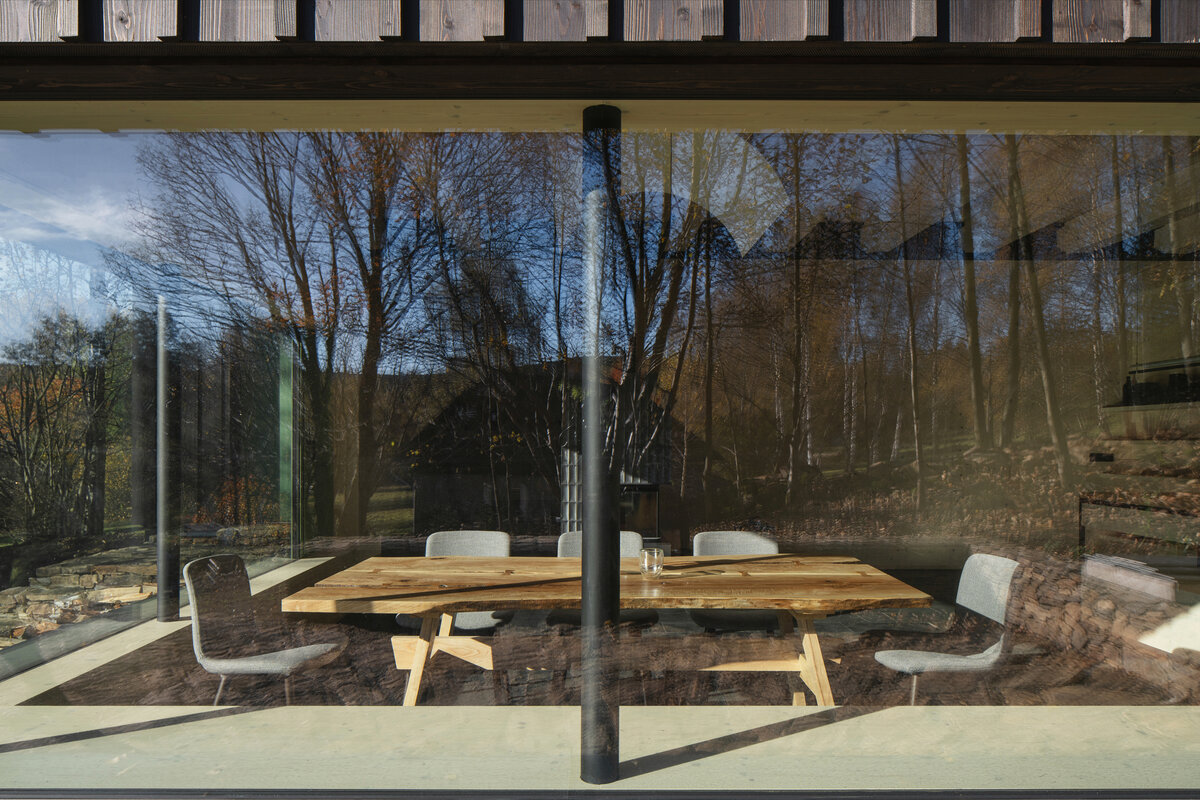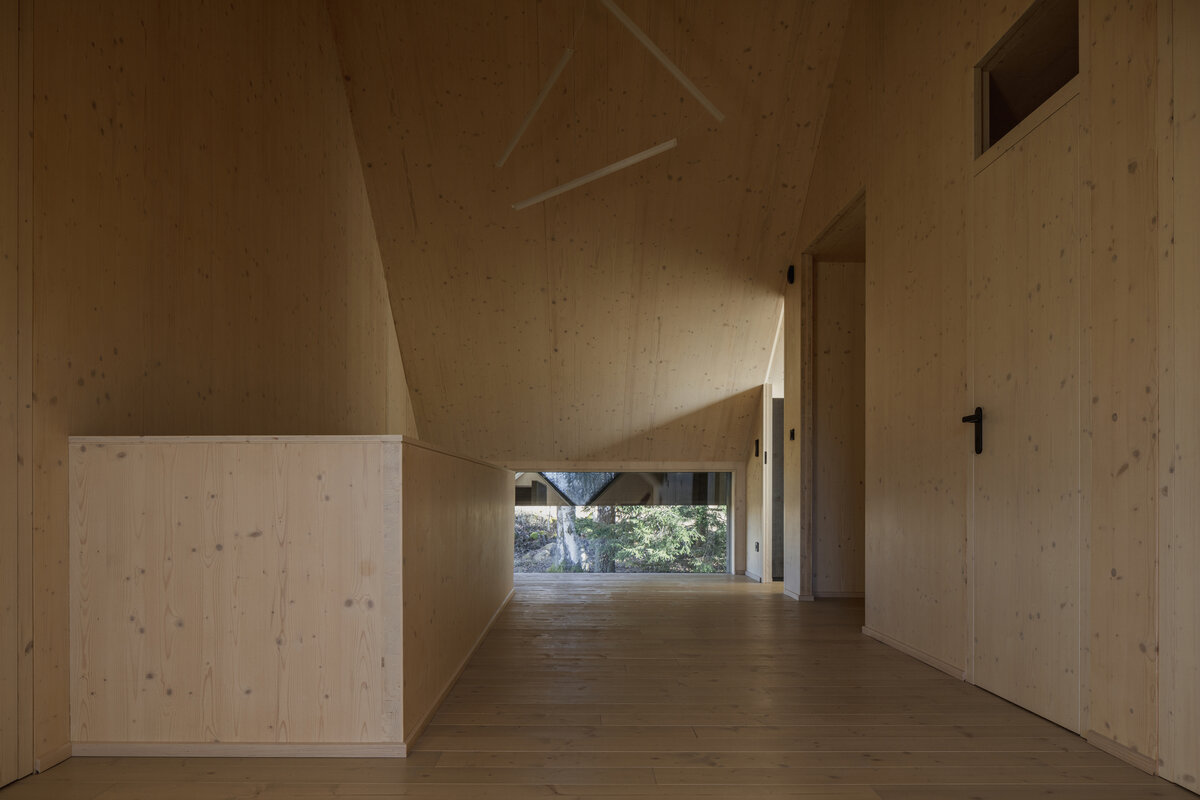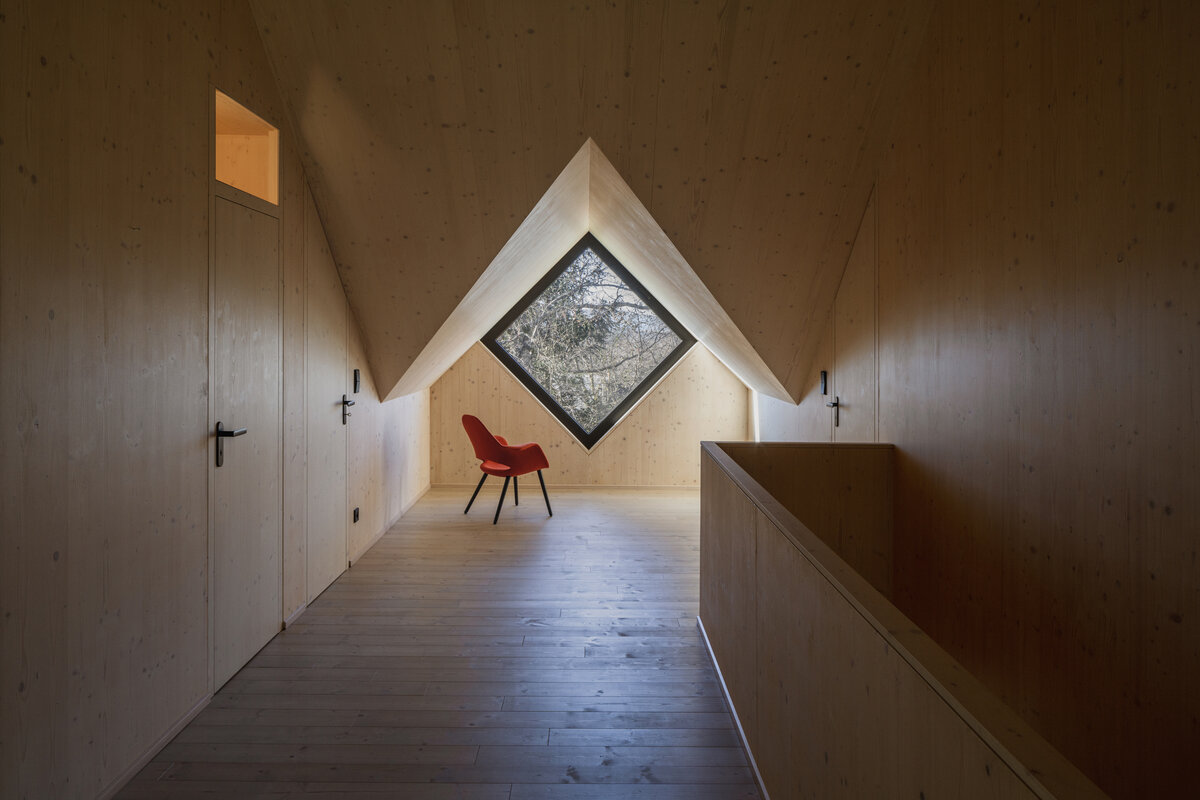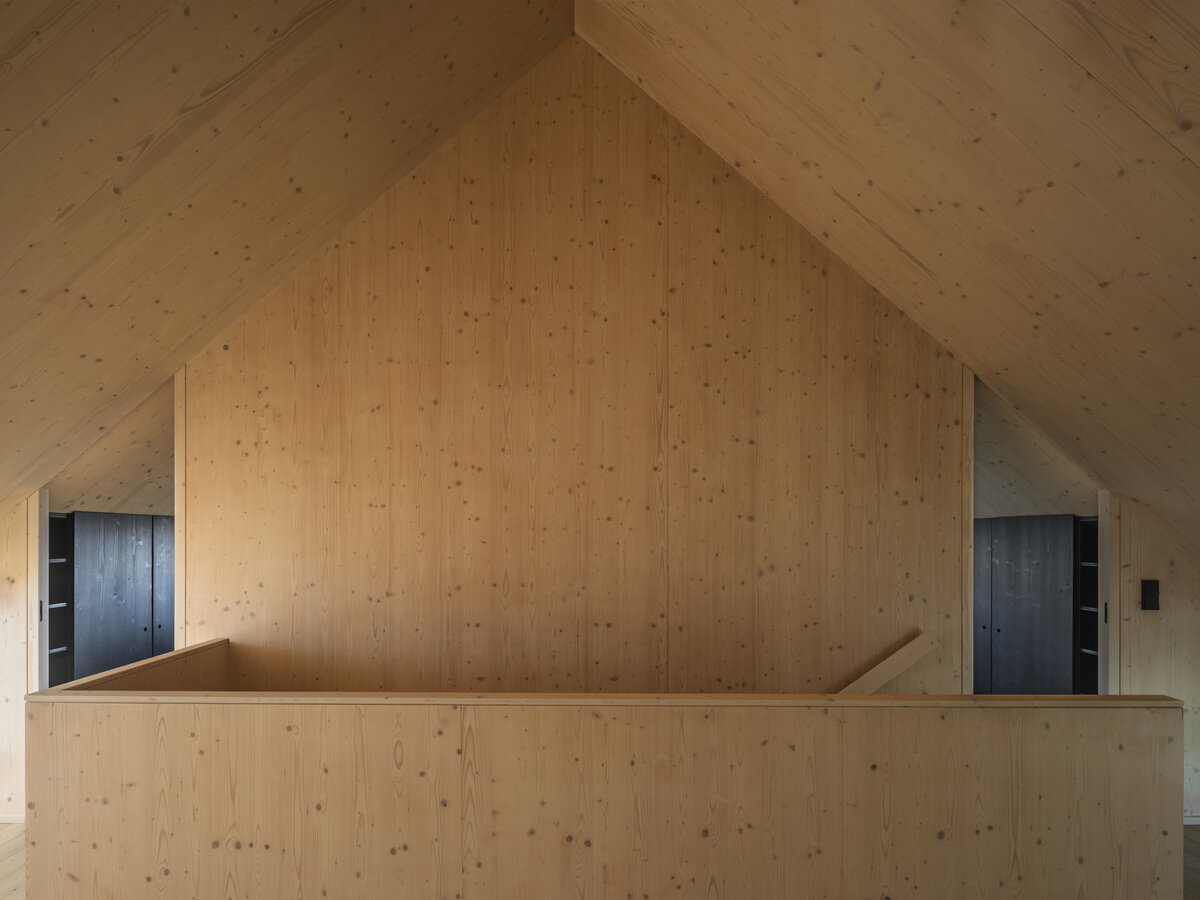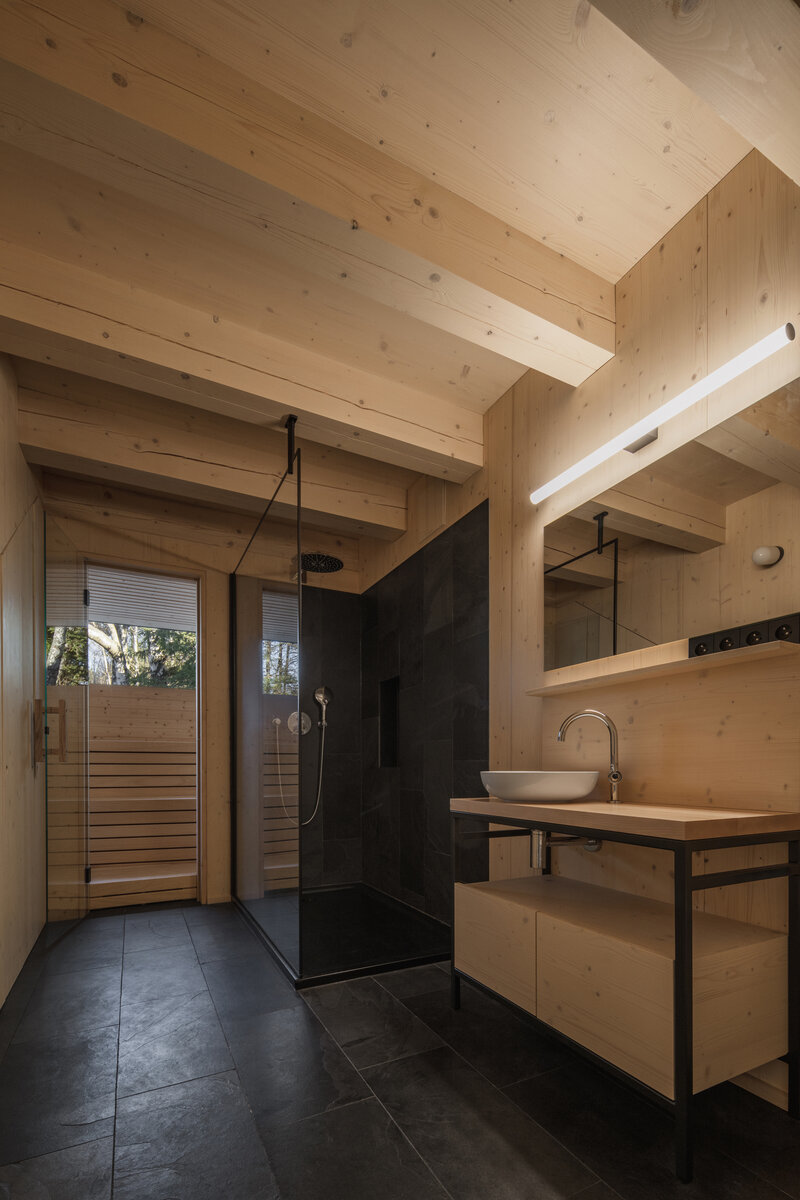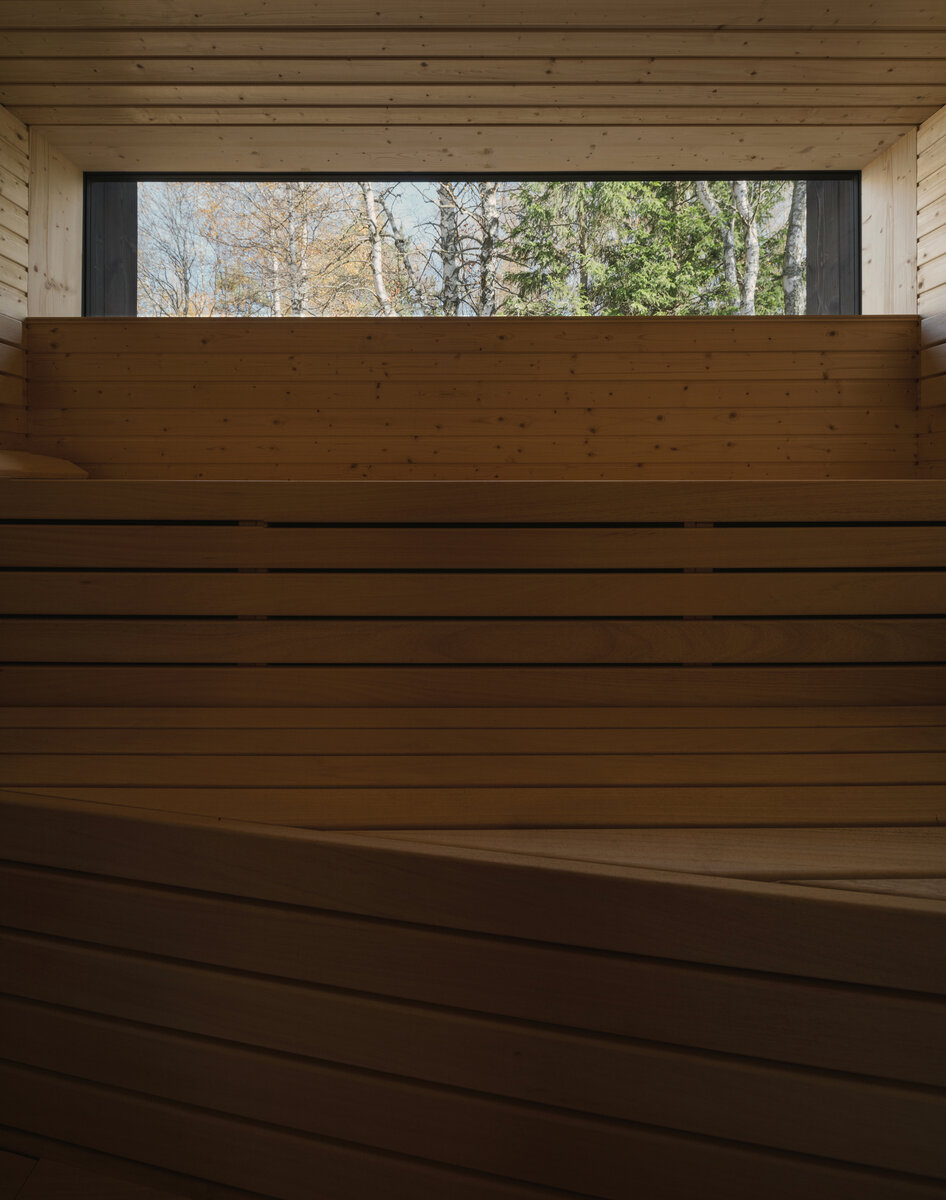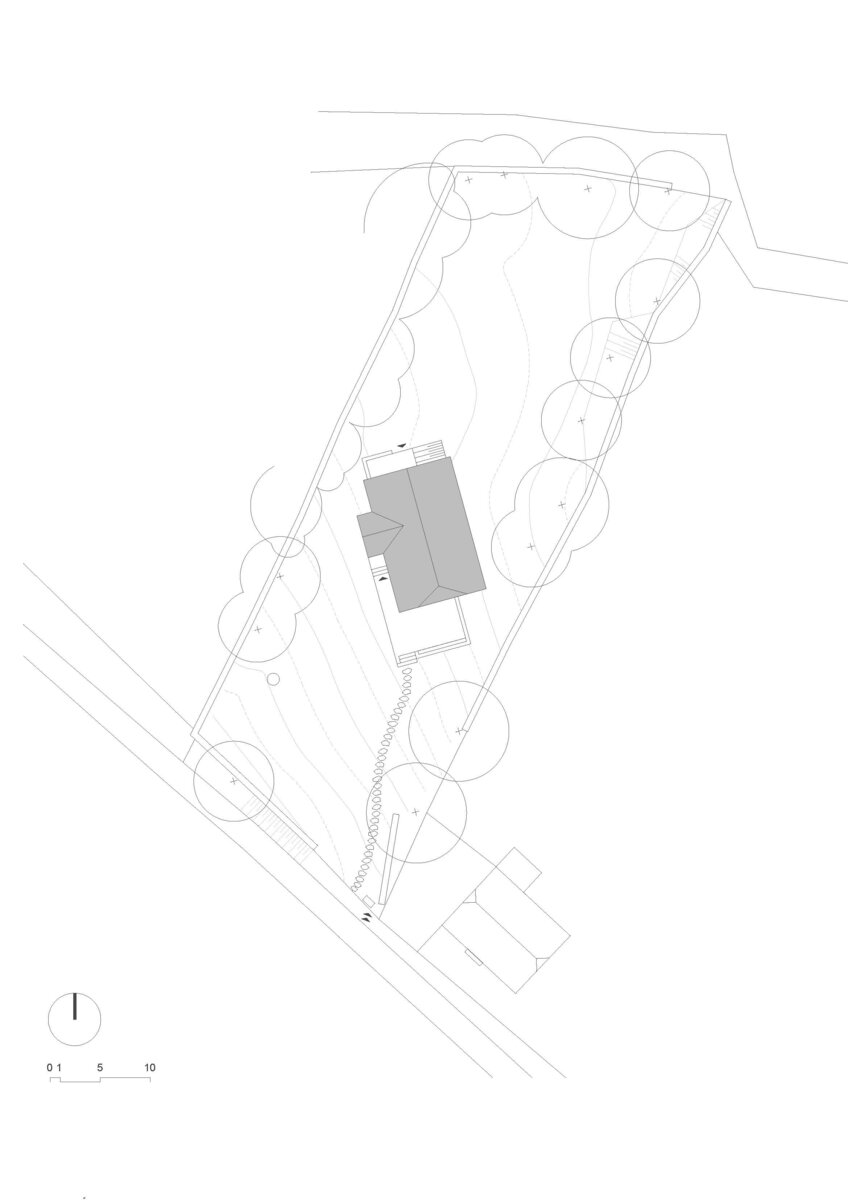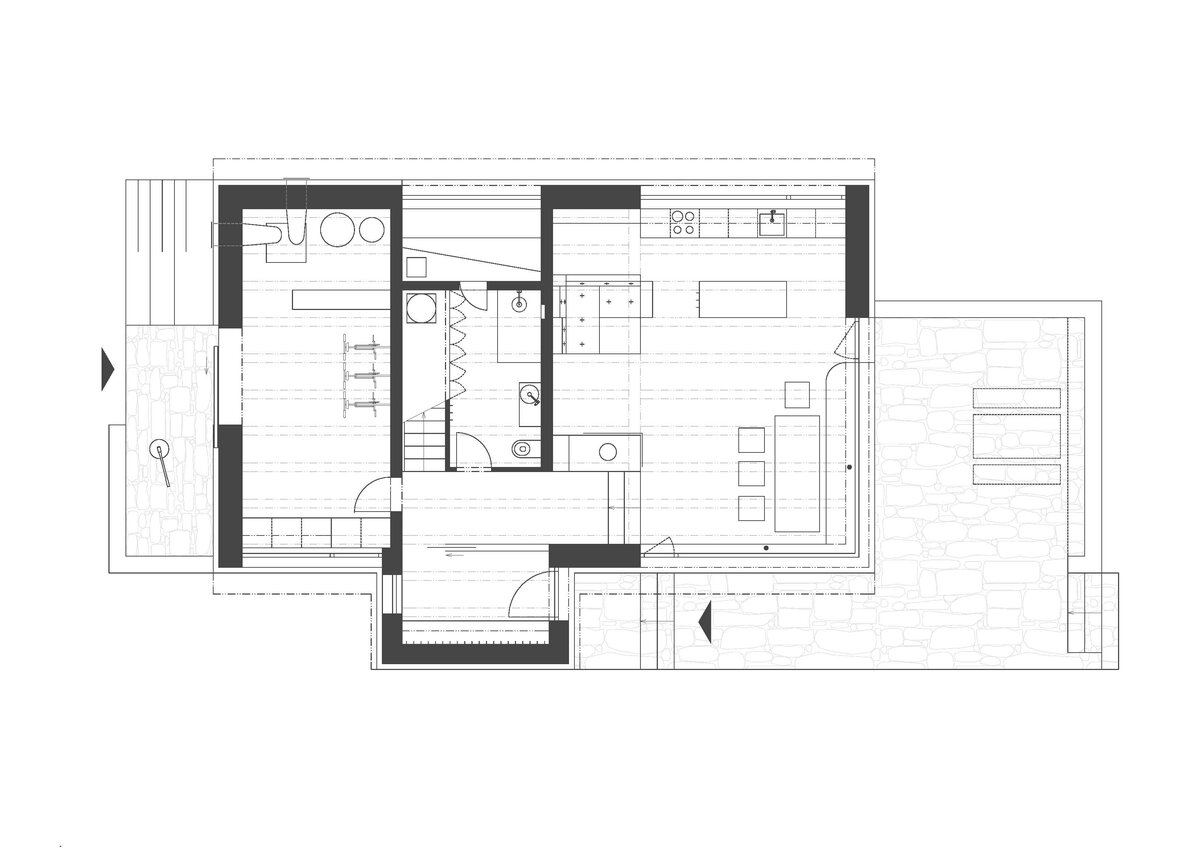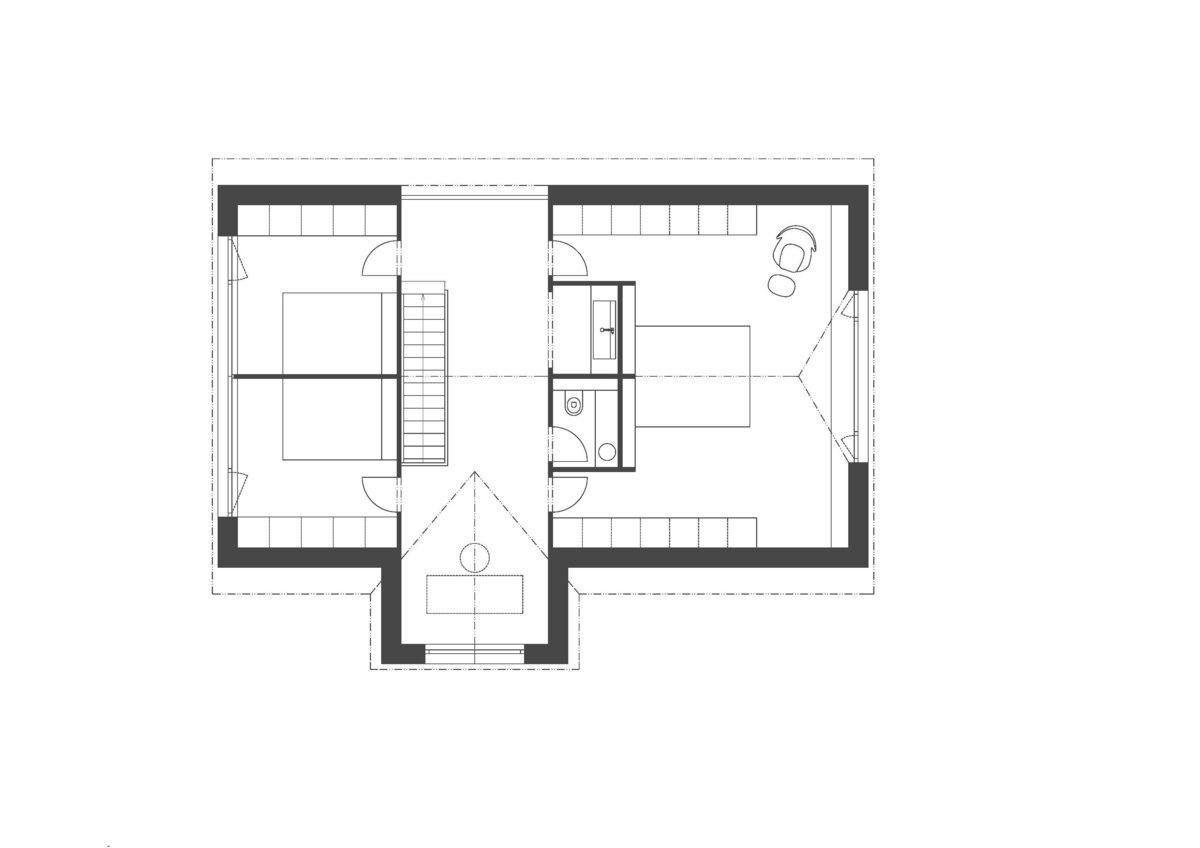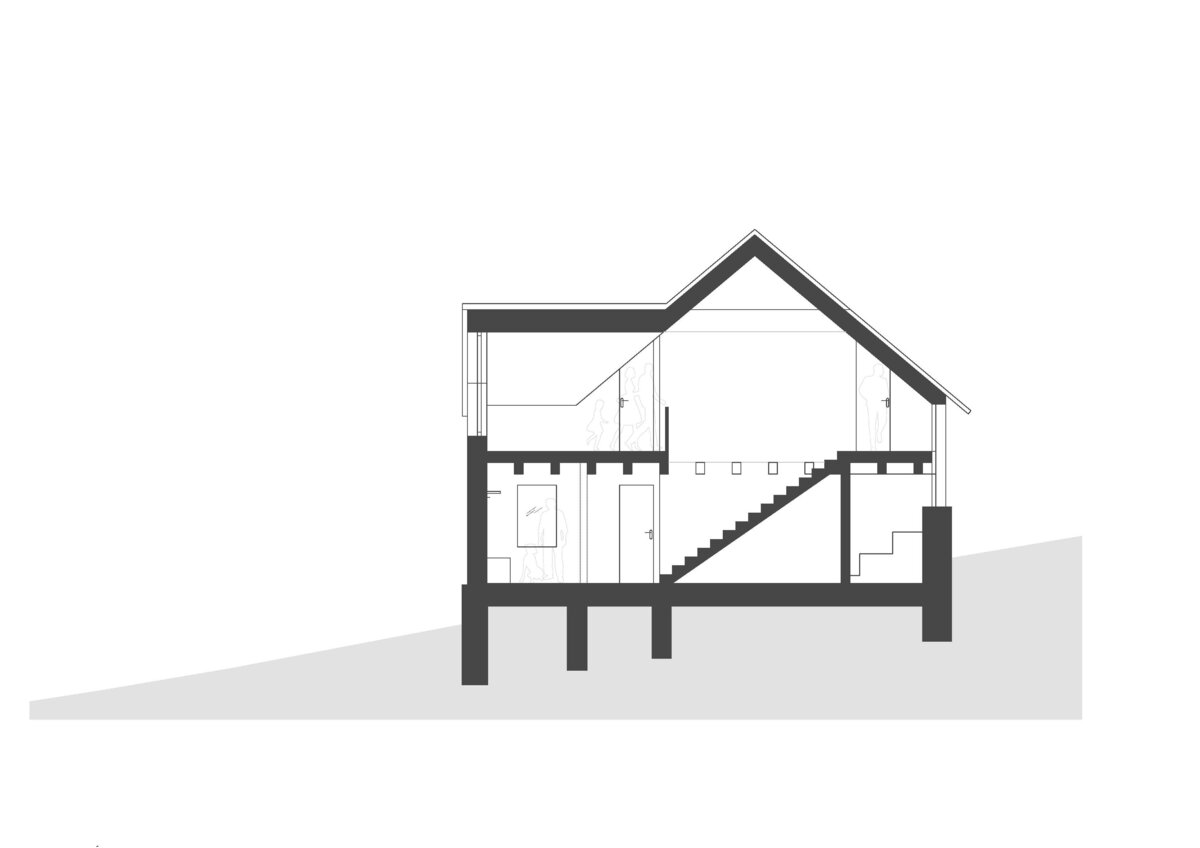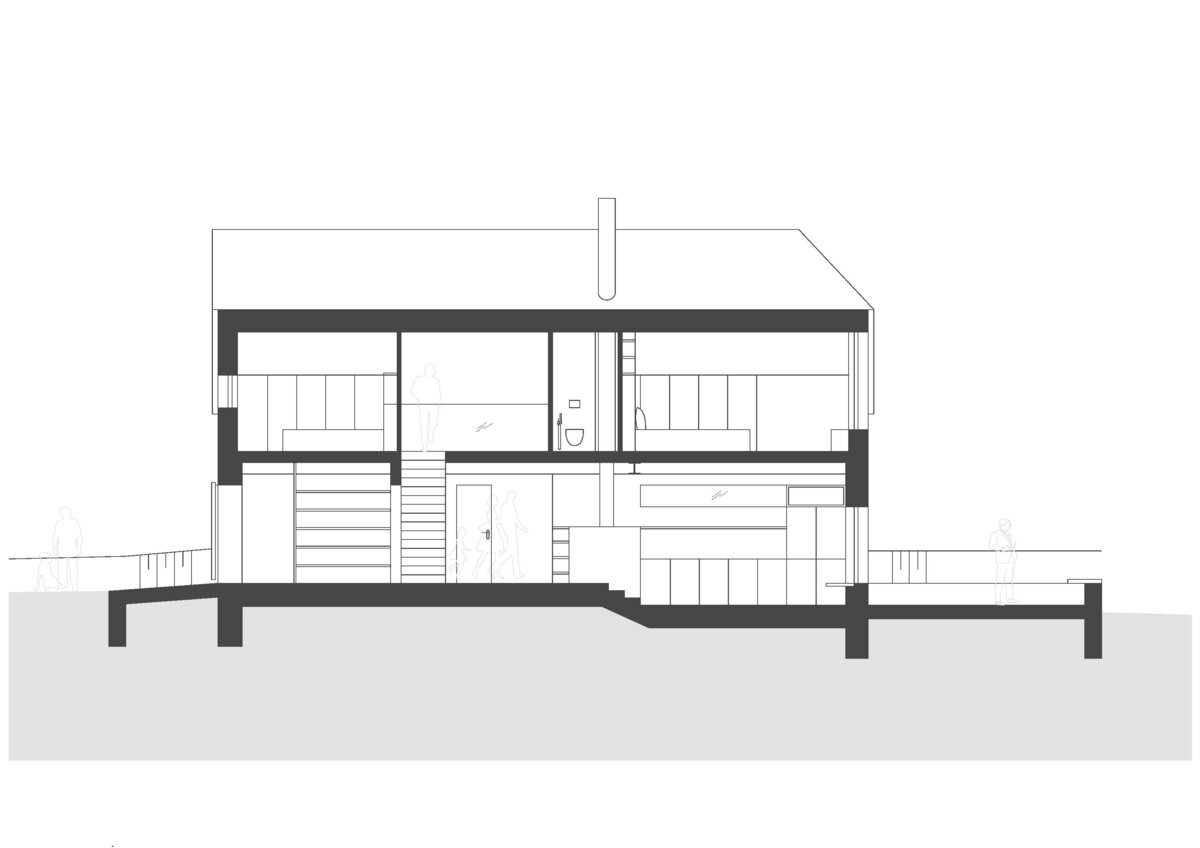| Author |
Markéta Cajthamlová, Petra Pelešková |
| Studio |
Markéta Cajthamlová Architektonická projekční kancelář |
| Location |
Šumava |
| Investor |
neuvedeno |
| Supplier |
neuvedeno |
| Date of completion / approval of the project |
January 2024 |
| Fotograf |
Petr Polák |
The land is part of the Šumava National Park, which means strict requirements for the shape of the building. For maximum context, we chose the form of a traditional cottage. For the client's wish to incorporate very nice views into the landscape, we used large windows that highlight different views, whether it is the distant horizon of the Šumava saddle or the image of very close birch roots...
The typical local character of the building was used, such as the significant width of the building, the location parallel to the land contours, minimal landscaping, the absence of a fence, protruding rizalit, gable roof with a half hip. The large window below it abstractly refers to the sign of the Alpine Gallery.
There were used traditional materials in the color of the original buildings – dark stained wood for the facade and local recycled stone for the plinth, low retaining walls and terraces. The traditionally very often used green shutters were the inspiration for the full ventilation openings that complement the frameless windows.
The layout is similar to a country house too: living and service area. The back door and service area are located from the north and the living room with a large fireplace and the main entrance to the south and views. The attic consists of three rooms, hall and a bathroom.
The Novatop system – wooden panels were used as a structure with a spruce board visible in the interior: as the inner side of the walls and the cladding of the truss. The facade is made of board cladding made of black-brown stained spruce. The roof is made of folded dark gray aluminum sheet. The windows are frameless triple-glazed windows and the full openings are made of aluminum profile. The floor was designed from black slate of a larger format on the ground floor and from Nordic spruce in the attic. Built-in furniture combines solid spruce and maple boards and steel black frames as a structure. The living room is dominated by a rough ash dining table.
The floor heating is provided by an internal air-water heat pump. The house has its own well and sump.
Green building
Environmental certification
| Type and level of certificate |
-
|
Water management
| Is rainwater used for irrigation? |
|
| Is rainwater used for other purposes, e.g. toilet flushing ? |
|
| Does the building have a green roof / facade ? |
|
| Is reclaimed waste water used, e.g. from showers and sinks ? |
|
The quality of the indoor environment
| Is clean air supply automated ? |
|
| Is comfortable temperature during summer and winter automated? |
|
| Is natural lighting guaranteed in all living areas? |
|
| Is artificial lighting automated? |
|
| Is acoustic comfort, specifically reverberation time, guaranteed? |
|
| Does the layout solution include zoning and ergonomics elements? |
|
Principles of circular economics
| Does the project use recycled materials? |
|
| Does the project use recyclable materials? |
|
| Are materials with a documented Environmental Product Declaration (EPD) promoted in the project? |
|
| Are other sustainability certifications used for materials and elements? |
|
Energy efficiency
| Energy performance class of the building according to the Energy Performance Certificate of the building |
C
|
| Is efficient energy management (measurement and regular analysis of consumption data) considered? |
|
| Are renewable sources of energy used, e.g. solar system, photovoltaics? |
|
Interconnection with surroundings
| Does the project enable the easy use of public transport? |
|
| Does the project support the use of alternative modes of transport, e.g cycling, walking etc. ? |
|
| Is there access to recreational natural areas, e.g. parks, in the immediate vicinity of the building? |
|
